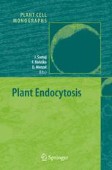Search
Search Results
-
Transcriptome analysis in abiotic stress conditions in higher plants
Drought, high salinity, and low temperature are major environmental factors that limit plant productivity. Plants respond and adapt to these stresses...
-
Signal transduction in plant cold acclimation
Temperate plants respond to low temperature by activating a cold acclimation program leading to enhanced tolerance to freezing temperatures. This...
-
Sensors of abiotic stress in Synechocystis
Systematic mutagenesis of histidine kinases in combination with DNA microarray technology has allowed us to identify sensors for cold, hyperosmotic...
-
Plant responses to heat stress
The heat stress response is characterized by inhibition of normal transcription and translation, higher expression of heat shock proteins (hsps) and...
-
Abscisic acid signalling
Signalling of abscisic acid (ABA) in plants is characterized by an amazing number of secondary messengers that are part of the pathway or modulate...
-
Plant salt tolerance
Soil salinity adversely affects crop productivity and quality. The success of breeding programs aimed at salinity tolerant crop varieties is limited...
-
Sterol Endocytosis and Trafficking in Plant Cells
Structural sterols are integral components of biological membranes. They regulate membrane permeability and fluidity, and they influence the...
-
Comparison of Molecular Mechanisms of Somatic and Zygotic Embryogenesis
Somatic embryogenesis has been used as a model system to understand the mechanisms regulating plant embryogenesis. The morphological and...
-
Extracellular Guidance Cues and Intracellular Signaling Pathways that Direct Pollen Tube Growth
Fertilization in flowering plants requires that a pollen tube deliver two sperm to the female gametes, which develop in ovules buried deep within...
-
SNAREs in Plant Endocytosis and the Post-Golgi Traffic
In eukaryotic cells, the transport vesicles carry various cargo proteins from a donor compartment to a target compartment, and discharge the cargo...
-
Plant Vacuoles: from Biogenesis to Function
The plant vacuolar system is far more complex than originally expected and multiple sorting pathways leading to various types of vacuoles can be...
-
Endocytosis in Guard Cells
Stomatal movement requires large and repetitive changes to cell volume and consequently surface area. These alterations in surface area are...
-
Endocytosis and Actomyosin Cytoskeleton
Mutual interactions between actin and endocytic assembly machineries are essential for successful clathrin-mediated endocytosis in yeast and...
-
Endocytosis and Membrane Recycling in Pollen Tubes
In plants, tip-growing cells are an ideal system to investigate signal transduction mechanisms and, among these, pollen tubes are one of the...
-
Plant Prevacuolar Compartments and Endocytosis
Prevacuolar compartments (PVCs) are membrane-bound organelles mediating protein traffic from both Golgi and plasma membrane to vacuoles in...
-
Importance of Cytoskeleton and Cell Wall in Somatic Embryogenesis
Both the cytoskeleton composed of microtubules and actin microfilaments as well as cell wall components such as arabinogalactan proteins and...
-
Ions and Pollen Tube Growth
Ions play a crucial role in the control of pollen tube growth. In this review we focus on four that seem especially important: calcium (Ca...
-
Comparative Analysis of Biological Models used in the Study of Pollen Tube Growth
The mechanisms of pollen tube growth have been studied in a wide variety of plant species. Since the 1990s, with the explosion of molecular...
-
Gametic Embryogenesis in Triticum: a Study of Some Critical Factors in Haploid (Microspore) Embryogenesis
This review of embryogenesis from microspores in two types of wheat examines the influences of various procedures used to induce and produce...
-
Molecular responses of higher plants to dehydration
A massive amount of data has been accumulating on the molecular responses of plants to water deficit. In plants, dehydration activates a protective...
